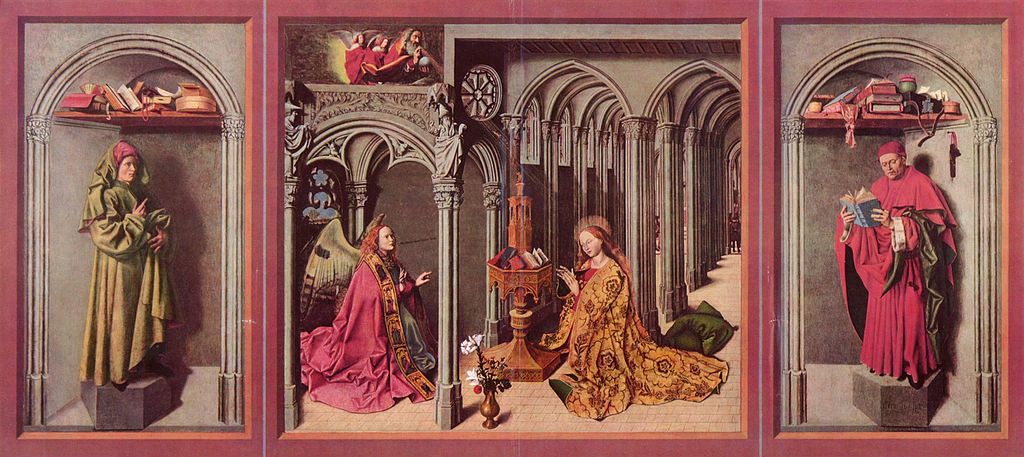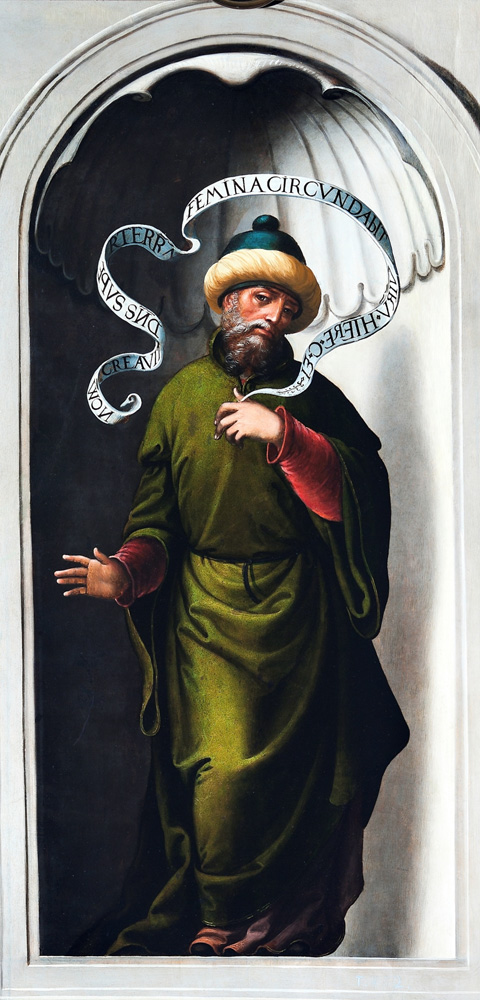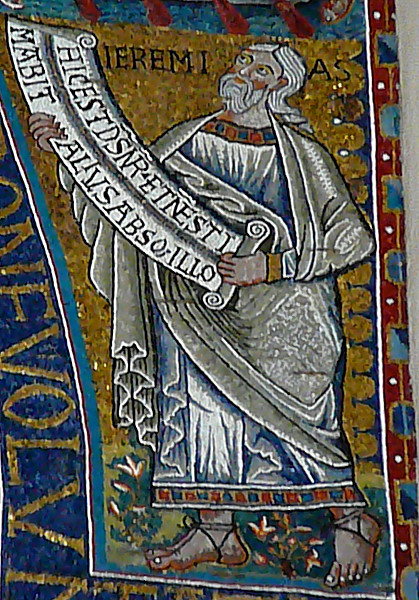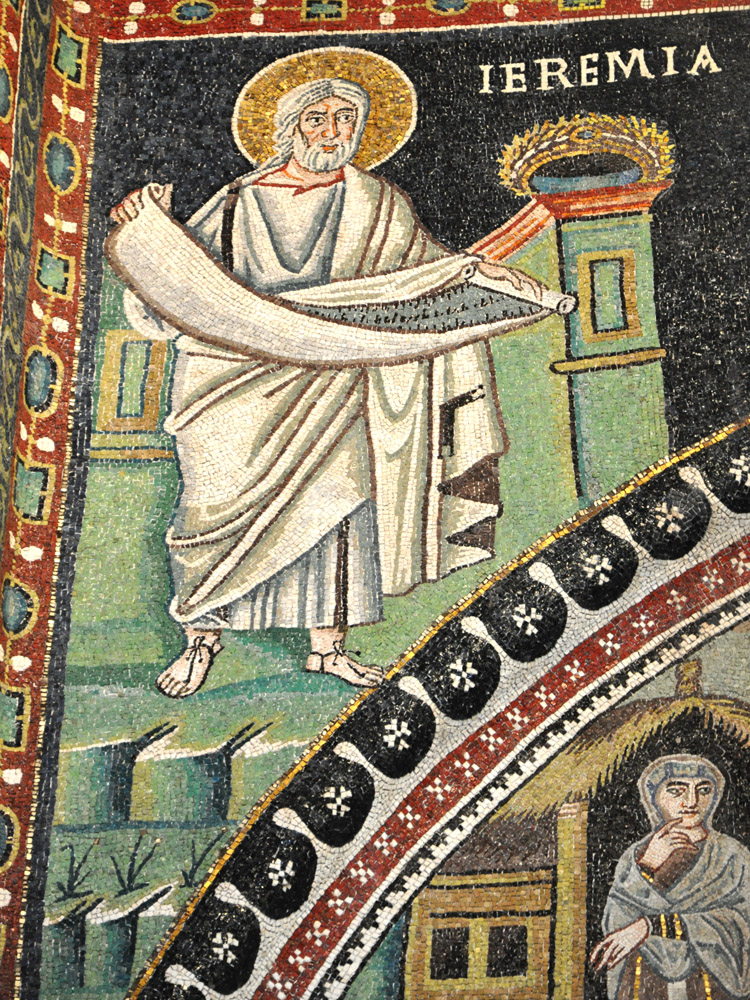Jeremiah's denunciations enraged the king and his councilors. He was beaten severely and at one point cast into the a deep pit. When Jerusalem was in fact destroyed by the Babylonians, all its inhabitants either went into captivity in Babylon or took refuge in Taphnas (today's Tell Defenneh, Egypt), where tradition has it that they stoned Jeremiah to death.1
Many passages in the books of Jeremiah and Baruch were interpreted as foreshadowing Christian themes. So most images of the prophet will include quotations from those passages. In the first picture at right, for example, the banderole quotes a verse taken to foretell the Incarnation.
Often portraits of Jeremiah are paired with one or more other prophets in the context of a single Christian theme. Thus Fra Angelico's great Crucifixion at San Marco, Florence, includes him among the eight Old Testament figures believed to have prophesied about Christ's crucifixion and resurrection. The second picture at right pairs Jeremiah's "Here is our Lord and no other is his equal" with a facing image of Isaiah's declaration, "I saw the Lord sitting above the sun." Both prophets are gazing up at an image of Christ on the Cross and thus asserting that the "Lord" they saw was Christ.
Similarly, the third picture at right pairs Jeremiah with Moses in the theme of covenant. On one side of the mosaic God gives Moses the tablets of the Law in what he calls "my covenant." Christians referred to this as the "Old Covenant," whereas on the other side Jeremiah is associated with a "new covenant" that would replace the one that God made when he led the Israelites "forth from the land of Egypt" (Jer. 31:31-32). The large lunette between the portraits features Abraham and his covenant with God: the Lord's promise of offspring on his part, and Abraham's obedience on his.
In the same way, the Aix Annunciation (below) pairs Jeremiah and Isaiah in the theme of the Incarnation. Both prophets were believed to have foretold that a virgin would give birth to the Redeemer. On the left is Isaiah, whose promise to King Ahaz that "a virgin shall conceive" was taken as a prophecy of Mary's virgin birth, and Jeremiah is on the right because his promise that the "virgin of Israel" would return to God was taken as a prophecy of the Incarnation.2

For details, see the description page.
Prepared in 2020 by Richard Stracke, Emeritus Professor of English, Augusta University.

Juan Correa de Vivar, The Prophet Jeremiah. The phrase on the banderole is one that Christian commentators considered prophetic of the birth of Christ. See the description page for the text of the phrase and the commentators' remarks.

In the apse mosaic at San Clemente, Rome, Jeremiah looks up toward a scene of the Crucifixion holding a scroll that says, "Here is our Lord and no one but he shall be counted his equal." (See the description page.)

A detail from the "Hospitality of Abraham" mosaic. Jeremiah appears opposite Moses at the top of the mosaic. (See the description page.)
MORE IMAGES
- 1475: The Jeremiah panel in the rood screen at Santa Maria Gloriosa dei Frari, Venice.
NAMES
DATES
- Jeremiah prophesied in the years 627-585 B.C.
BIOGRAPHY
- Acta Sanctorum, May vol. 1, 5-7.
NOTES
1 Many modern commentators dismiss the stoning of Jeremiah in Taphnas as a myth, but it is referenced in a number of early Christian works: Tertullian's Scorpiace, 8; the Menologion (10th century) and the Alexandrian Chronicle (circa 5th century), Acta Sanctorum, May vol. 1, 6; and Epiphanius's (4th century) Lives of the Prophets, ¶2. One might add that in the New Testament both Jesus and St. Stephen speak as if the murder of the prophets were a fact well known to their hearers. (See Matthew 5:12, 23:29-37, Acts 7:52b).2 Isaiah 7:14, Jeremiah 31:21, Glossa Ordinaria, IV, 93-94 and 794.